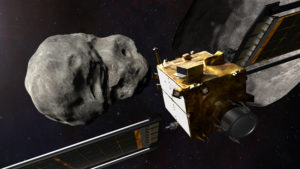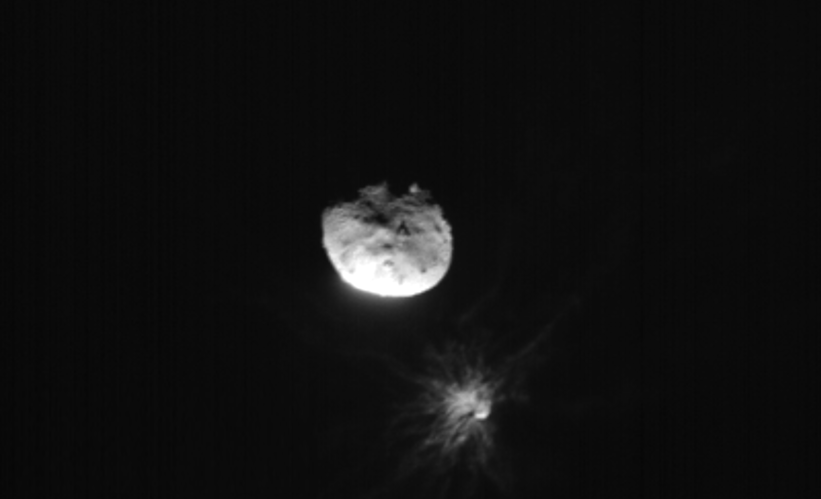NASA’s Double Asteroid Redirection Test (DART), the first planetary defense technology demonstrator, traveled ten months in space and successfully impacted and altered the path of an egg-shaped asteroid called Dimorphos. Dimorphos is roughly the size of a football field, and it orbits a parent asteroid five times larger than itself. DART, which was no bigger than a refrigerator, slammed into Dimorphos at about 14,000 miles per hour. Steve Gorman of Reuters reports that DART succeeded in nudging the rocky moonlet from its natural path into a faster orbit. He continues (Abridged):
The spacecraft NASA deliberately crashed into an asteroid last month succeeded in nudging the rocky moonlet from its natural path into a faster orbit, marking the first-time humanity has altered the motion of a celestial body, the U.S. space agency announced on Tuesday.
The $330 million proof-of-concept mission, which was seven years in development, also represented the world’s first test of a planetary defense system designed to prevent a potential doomsday meteorite collision with Earth.
Findings of telescope observations unveiled at a NASA news briefing in Washington confirmed the suicide test flight of the DART spacecraft on Sept. 26 achieved its primary objective: changing the direction of an asteroid through sheer kinetic force.
Astronomical measurements over the past two weeks showed the target asteroid was bumped slightly closer to the larger parent asteroid it orbits and that its orbital period was shortened by 32 minutes, NASA scientists said.
“This is a watershed moment for planetary defense and a watershed moment for humanity,” NASA chief Bill Nelson told reporters in announcing the results. “It felt like a movie plot, but this was not Hollywood.”
Impact Images of DART Slamming into Dimorphos and the Plume it Generated:
LUKE image showing Didymos-Dimorphos and the plume (distance LICIACube-Dimorphos = 56.7 km) Credit: ASI/NASA
ASI’s LICIACube satellite acquired this image just before its closest approach to the Dimorphos asteroid, after the Double Asteroid Redirect Test, or DART mission, purposefully made impact on Sep. 26, 2022. Didymos, Dimorphos, and the plume coming off of Dimorphos after DART impact are clearly visible. Credit: ASI/NASA
Last month’s impact, 6.8 million miles (10.9 million km) from Earth, was monitored in real time from the mission operations center at the Johns Hopkins University Applied Physics Laboratory (APL) in Laurel, Maryland, where the spacecraft was designed and built for NASA.







